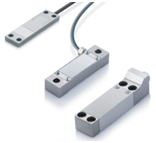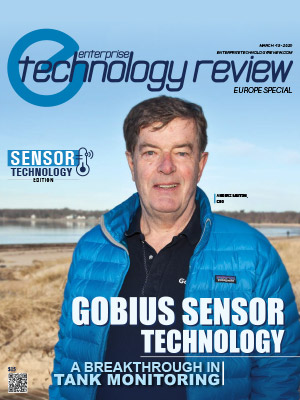 Matthias Tanner, Founder and Managing Director,X-Sensors AG
Matthias Tanner, Founder and Managing Director,X-Sensors AG Strain sensors are firmly screwed to the measuring point for permanent operation. This creates a frictional connection between the extensometer and the machine component to be measured. By means of this frictional connection, the strain experienced by the machine component is transferred directly to the strain sensor and can thus be measured reliably. Depending on the version, the signal is amplified by means of an integrated bridge amplifier as a voltage or current output signal in order to be transferred as a standard industrial standard signal (e.g. 0-10 V or 4-20 mA) to a display device or a control system.
X-SENSORS is broadly positioned in the field of strain transducers and has a lot of experience in cyclical and static applications
Strain sensors can usually be integrated very easily into existing structures. When upgrading old presses, for example, it is not always possible to place load cells directly in the force flow due to space constraints.
Or the application of load cells would be connected with a very high effort, as it would be the case for example when retrofitting a silo weight measurement with load cells below the silo construction weighing tons.
Ideally, strain sensors are used in cyclical applications. This allows the signal to be periodically zeroed, the so-called reset. This is an extremely efficient and cost-effective method of effectively suppressing any drift and thus obtaining a signal strictly proportional to the process force.
Screwed-on strain sensors are very overload-proof, as too much strain is no longer transmitted via the screw connections, the strain sensor is thus reliably protected against overload.
X-SENSORS is broadly positioned in the field of strain transducers and has a lot of experience in cyclical and static applications.
Our portfolio of extensometers is characterized by the following features:
- Different designs available for different space conditions
- Wide measuring range covers a wide range of requirements
- Robust and common output signals allow easy integration into existing control systems
- Very good performance characteristics in terms of speed and accuracy
- Mobile extensometer enables exact determination of the mounting location in the maximum strain curve
 Typical extensometers operate between a range of 250 - 1'000 µm/m. X-SENSORS offers you very sensitive extensometers, which already measure smallest measuring ranges of up to 50 µm/m with a resolution of less than 0.1 µm/m. The series X-103, X-113 and X-109 are widely introduced to the market and convince by high reliability, functionality and cost efficiency.
Typical extensometers operate between a range of 250 - 1'000 µm/m. X-SENSORS offers you very sensitive extensometers, which already measure smallest measuring ranges of up to 50 µm/m with a resolution of less than 0.1 µm/m. The series X-103, X-113 and X-109 are widely introduced to the market and convince by high reliability, functionality and cost efficiency.
In order to obtain reliable measurement results, it is often unavoidable to adapt the extensometers to the specific requirements in order to best meet the environment and the measurement task. X-SENSORS has a wealth of experience in the field of specific extensometers and is looking forward to every new challenge. Please contact us!
Ideally, strain sensors are used in cyclical applications. This allows the signal to be periodically zeroed, the so-called reset. This is an extremely efficient and cost-effective method of effectively suppressing any drift and thus obtaining a signal strictly proportional to the process force.
Screwed-on strain sensors are very overload-proof, as too much strain is no longer transmitted via the screw connections, the strain sensor is thus reliably protected against overload.
X-SENSORS is broadly positioned in the field of strain transducers and has a lot of experience in cyclical and static applications.
-
X-SENSORS offers you very sensitive extensometers, which already measure smallest measuring ranges of up to 50 µm/m with a resolution of less than 0.1 µm/m
Our portfolio of extensometers is characterized by the following features:
- Different designs available for different space conditions
- Wide measuring range covers a wide range of requirements
- Robust and common output signals allow easy integration into existing control systems
- Very good performance characteristics in terms of speed and accuracy
- Mobile extensometer enables exact determination of the mounting location in the maximum strain curve
 Typical extensometers operate between a range of 250 - 1'000 µm/m. X-SENSORS offers you very sensitive extensometers, which already measure smallest measuring ranges of up to 50 µm/m with a resolution of less than 0.1 µm/m. The series X-103, X-113 and X-109 are widely introduced to the market and convince by high reliability, functionality and cost efficiency.
Typical extensometers operate between a range of 250 - 1'000 µm/m. X-SENSORS offers you very sensitive extensometers, which already measure smallest measuring ranges of up to 50 µm/m with a resolution of less than 0.1 µm/m. The series X-103, X-113 and X-109 are widely introduced to the market and convince by high reliability, functionality and cost efficiency. In order to obtain reliable measurement results, it is often unavoidable to adapt the extensometers to the specific requirements in order to best meet the environment and the measurement task. X-SENSORS has a wealth of experience in the field of specific extensometers and is looking forward to every new challenge. Please contact us!
|
Share this Article:
Tweet
|
Top
















